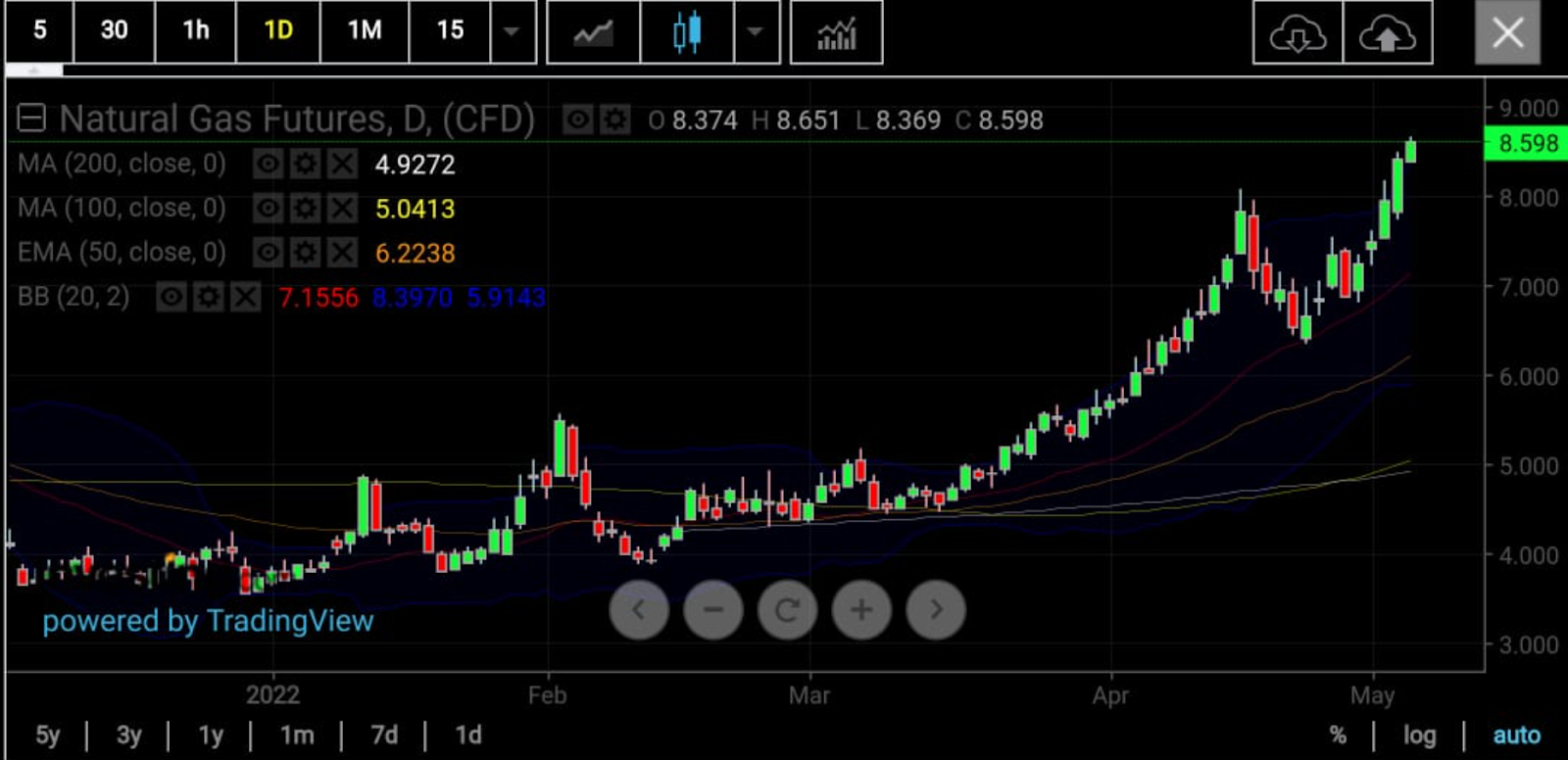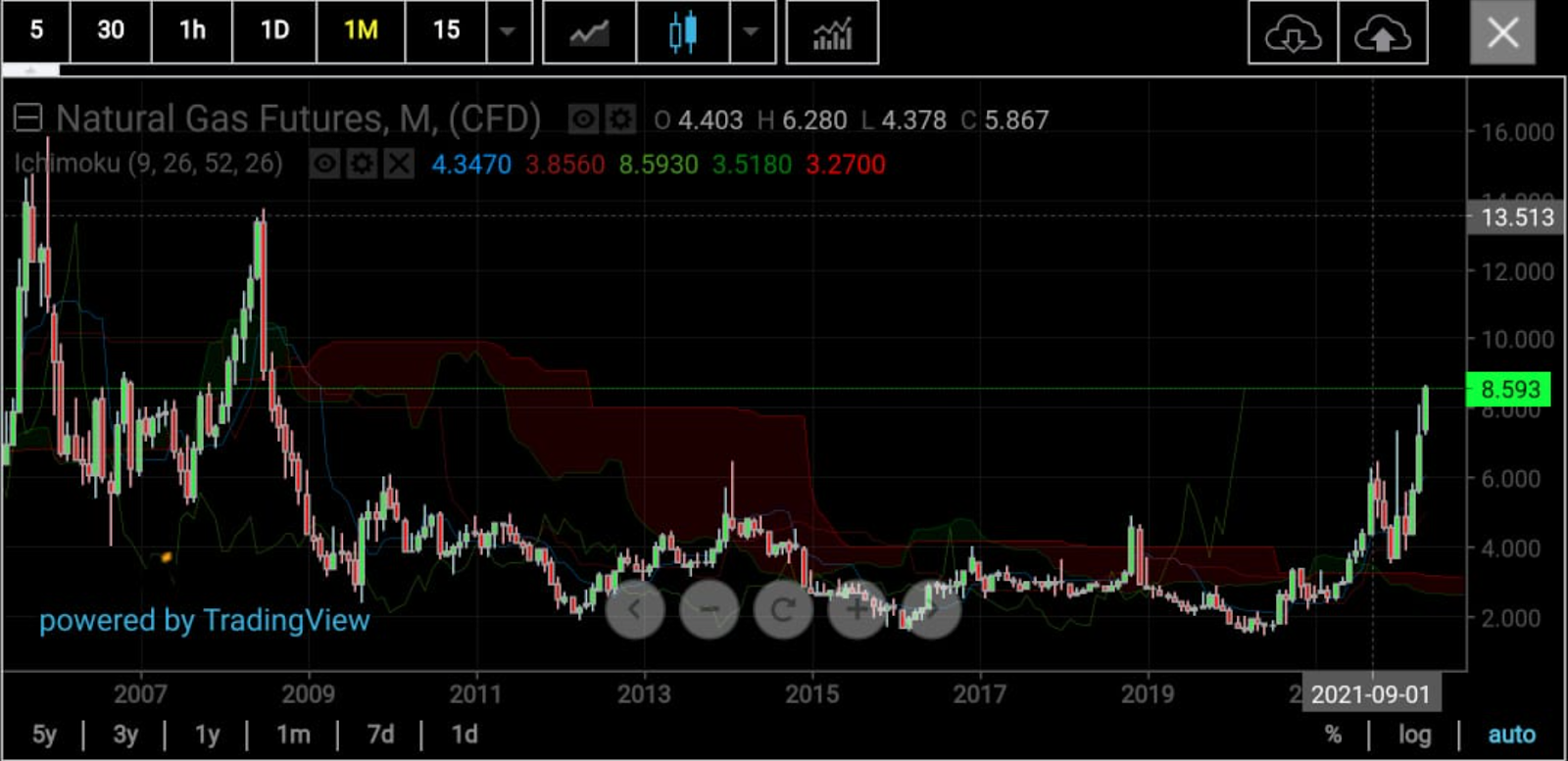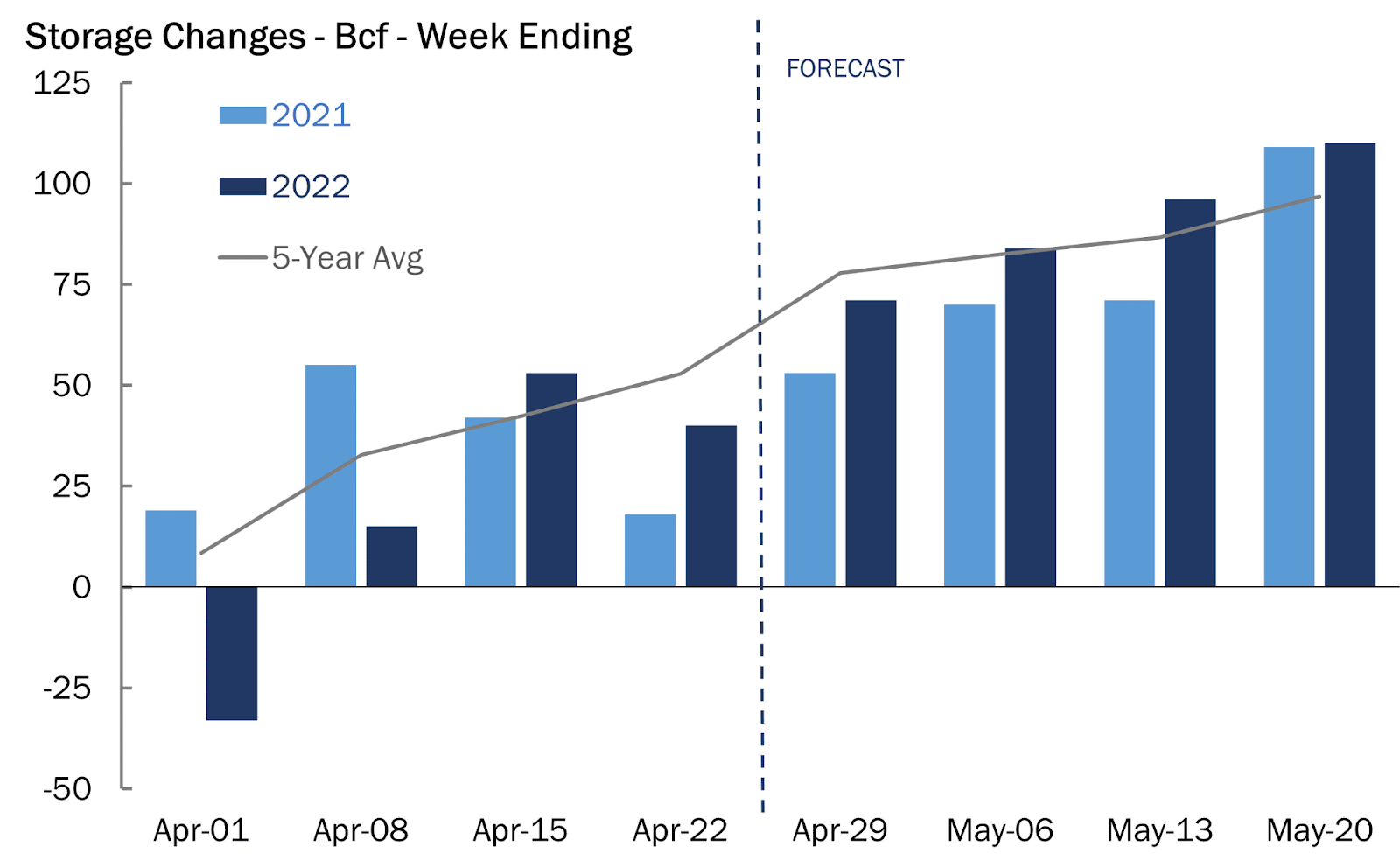Had one been told back in December—before the Russia-Ukraine drama really got heated up—that natural gas would be double the price by April, the temptation might have been to laugh. But here we are, just over four months later, with the debate having humorously shifted to whether gas prices will stop rising after getting to double digits.
Technical charts suggest that this year’s 130% rally on the Henry Hub will push on, making $10 or more for a million metric British thermal units (mmBtu) a real possibility.

Charts courtesy of skcharting.com
“Momentum indicators suggest that we have entered into a new bull market that has enough steam to reach beyond $9 and $10 per mmBtu,” Sunil Kumar Dixit, chief technical strategist at skcharting.com said.
Dixit said the bullish build came in mid-March as Henry Hub’s 50-Day Exponential Moving Average crossed the 100- and 200-Day Simple Moving Average.
Now, monthly chart stochastics and Relative Strength Index readings point to bigger aims for Henry Hub futures, he said.
“Once gas settles above $10 and $8 - $10 become a new normal, look for $13 highs,” Dixit said.
Interestingly, the last time gas went from $8 to $9 and then to $13 was all in 2008, in a rally that occurred in back to back months between February and July that year.

Charts courtesy of skcharting.com
Dixit noted that gas' prior drop from $8.065 to $6.345 would have been a “good time” to go long as the swing lower was strongly supported by the middle Bollinger Band on Henry Hub’s daily chart. “Those who are late to the party can wait for a correction to $8 and $7 for the next leg higher,” he said.

Source: Gelber & Associates
Forecasts for gas-in-storage, meanwhile, indicate that the supply situation over the coming weeks might not be as dire as now, with the advent of warmer weather seen canceling indoor heating demand well before the need for strong cooling arises across the United States.
At that point, volatility at the top—an inherent trait of natural gas—could shave a spectacular 20-30% off the price, prompting a retreat back to $8-$7 levels, even if storage then remains at a deficit to five-year levels.
That aligns with Dixit’s call that latecomers to the rally can still hope to wait to catch the market on on its swing lower.
“The rise past $8 has been somewhat reminiscent of the old pre-shale era of gas trading, with extremely high volatility and intense, spastic moves to the upside,” analysts at Houston-based gas markets consultancy Gelber & Associates told clients of the firm in an email on Wednesday.
“There are signs that the current ~292 billion cubic feet (bcf) deficit could begin to ease in May as a result of several higher than average storage injections,” the analysts added.
National temperatures in the United States have firmly made their way into the mid-60 Fahrenheit levels, and will likely continue to push additional gas into storage.
Notwithstanding the price volatility, which in itself is sometimes more of a function of technicals and a question of which side has the stronger hand, production has no guarantee of growing by leaps and bounds to keep prices sufficiently depressed, the analysts at Gelber & Associates said.
“Production growth has been stymied by ongoing labor shortages and supply chain issues,” the team noted.
“Additionally, with rising coal prices, fuel switching has done little to abate incoming natural gas demand over the summer. The market’s normal negative feedback loops used to combat higher prices are nowhere to be seen, and until production makes an appearance, the solution for higher prices will always be higher prices.”
The latest debate over the price, direction and storage of gas comes ahead of the US Energy Information Administration’s weekly inventory update, with industry analysts predicting a higher input of 68 bcf versus the previous week’s injection of 40 bcf.
Production on Wednesday remained more than 2 bcf below the highs of this year, wounded by late-April blizzards in North Dakota and the Rockies, as well as maintenance in the Northeast and Texas, forecaster NatGasWeather noted.
With production hampered by spring maintenance and a slow recovery from April storms, the firm said demand through next week should be strong enough to keep natural gas storage deficits near or slightly above 300 bcf “before minor improvements are possible May 12-20.”
“Essentially, the background state will remain relatively bullish into the foreseeable future unless there were to be a notable jump in Lower 48 production,” NatGasWeather said.
Disclaimer: Barani Krishnan uses a range of views outside his own to bring diversity to his analysis of any market. For neutrality, he sometimes presents contrarian views and market variables. He does not hold positions in the commodities and securities he writes about.
